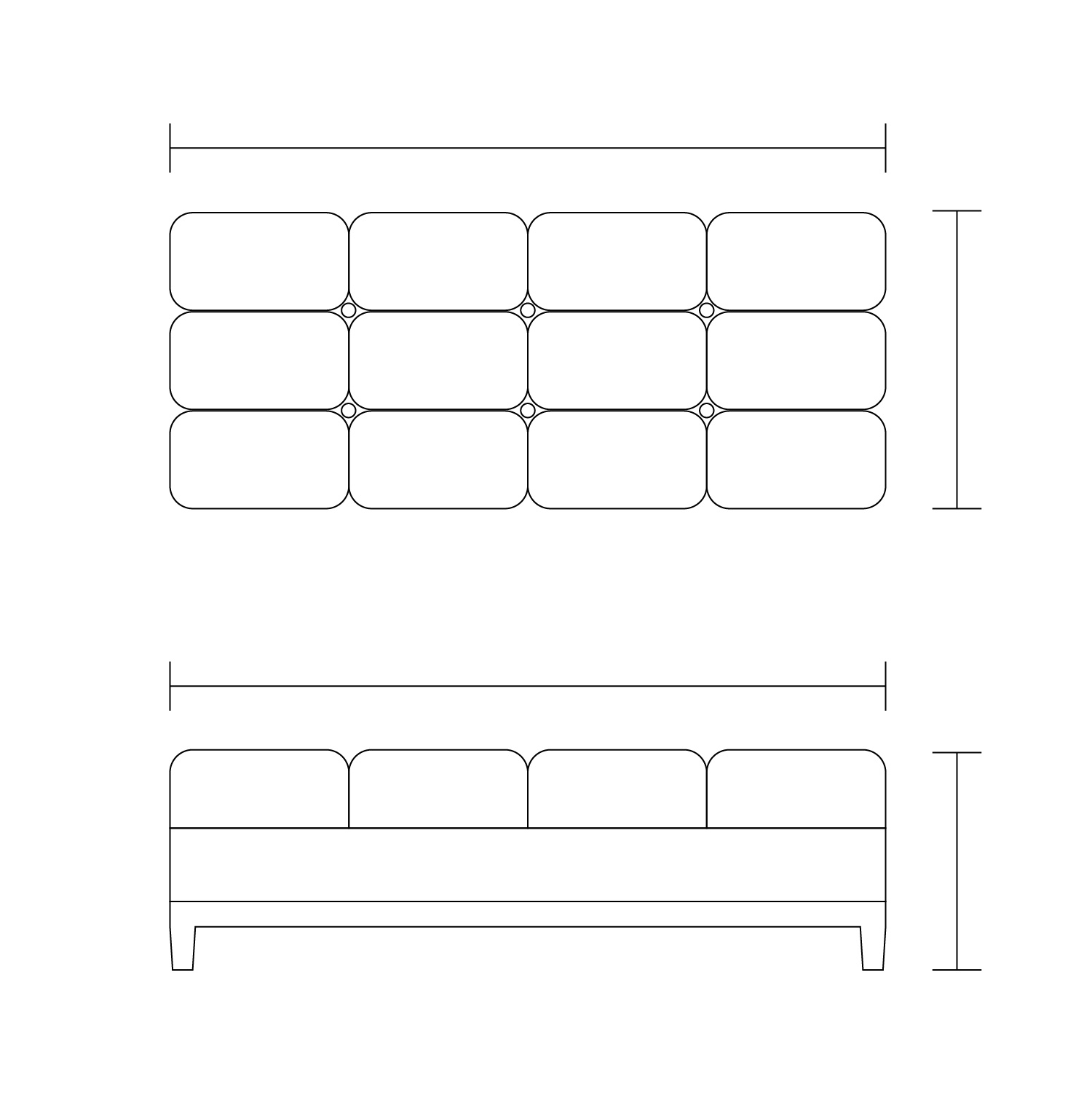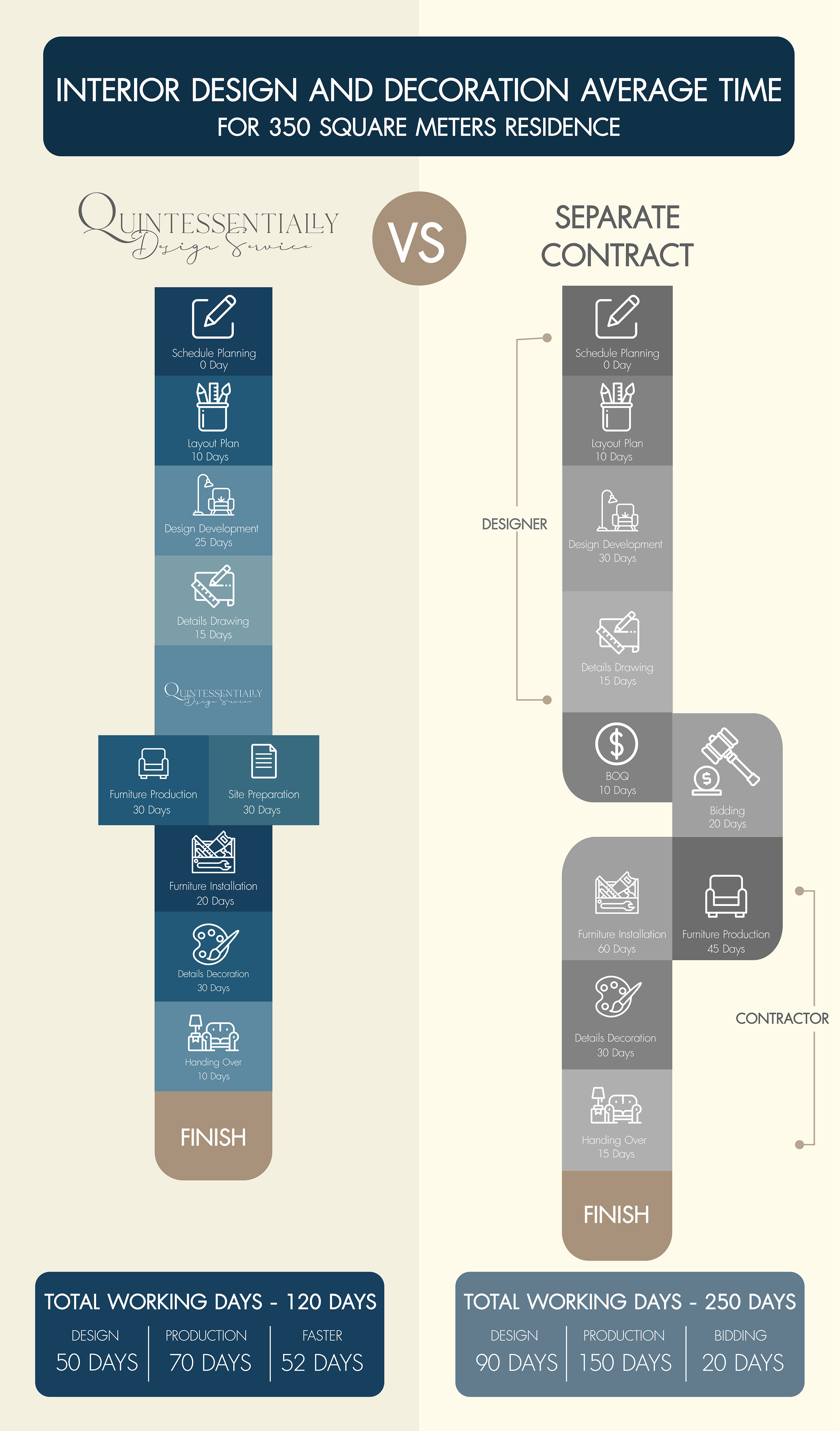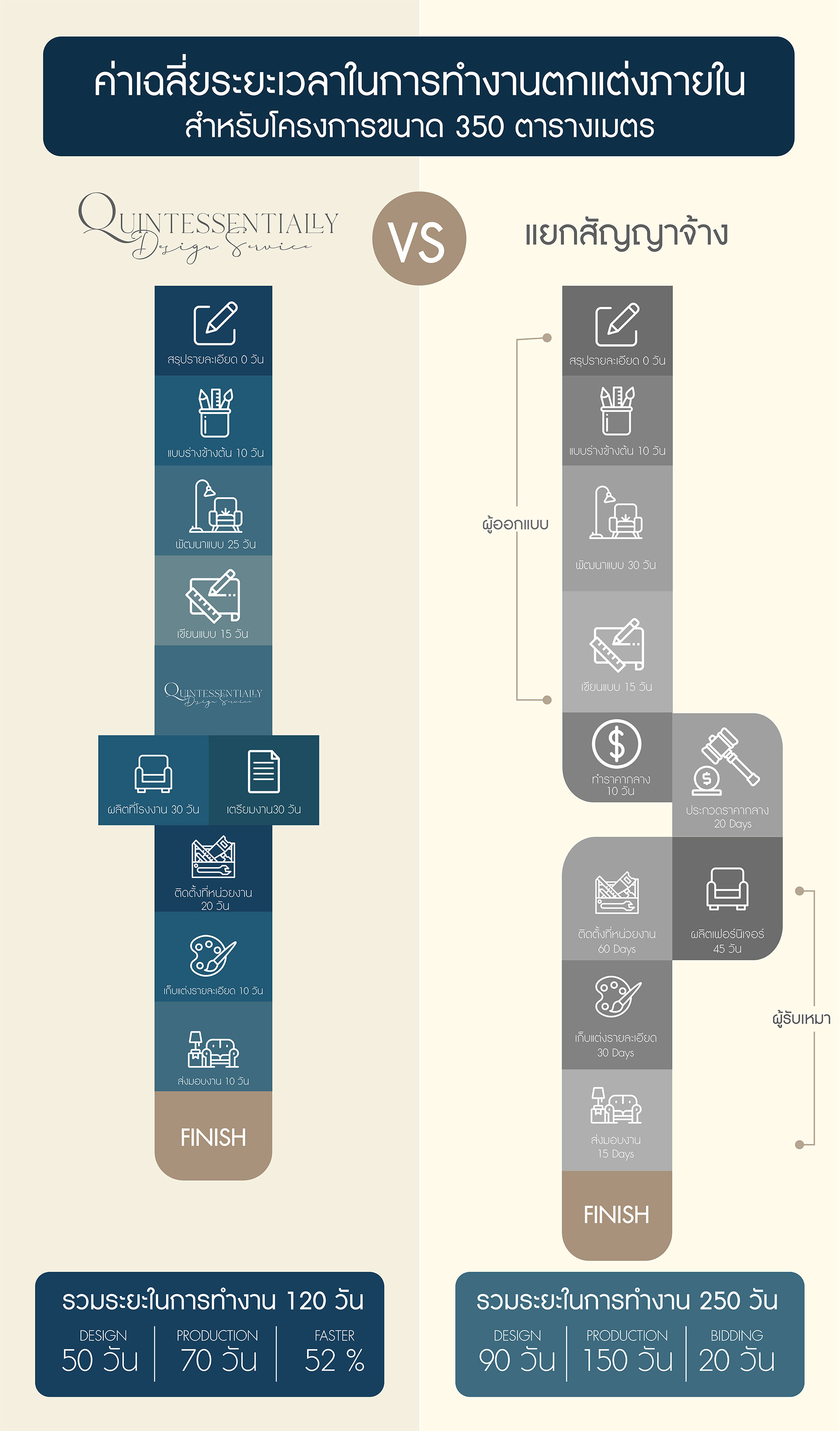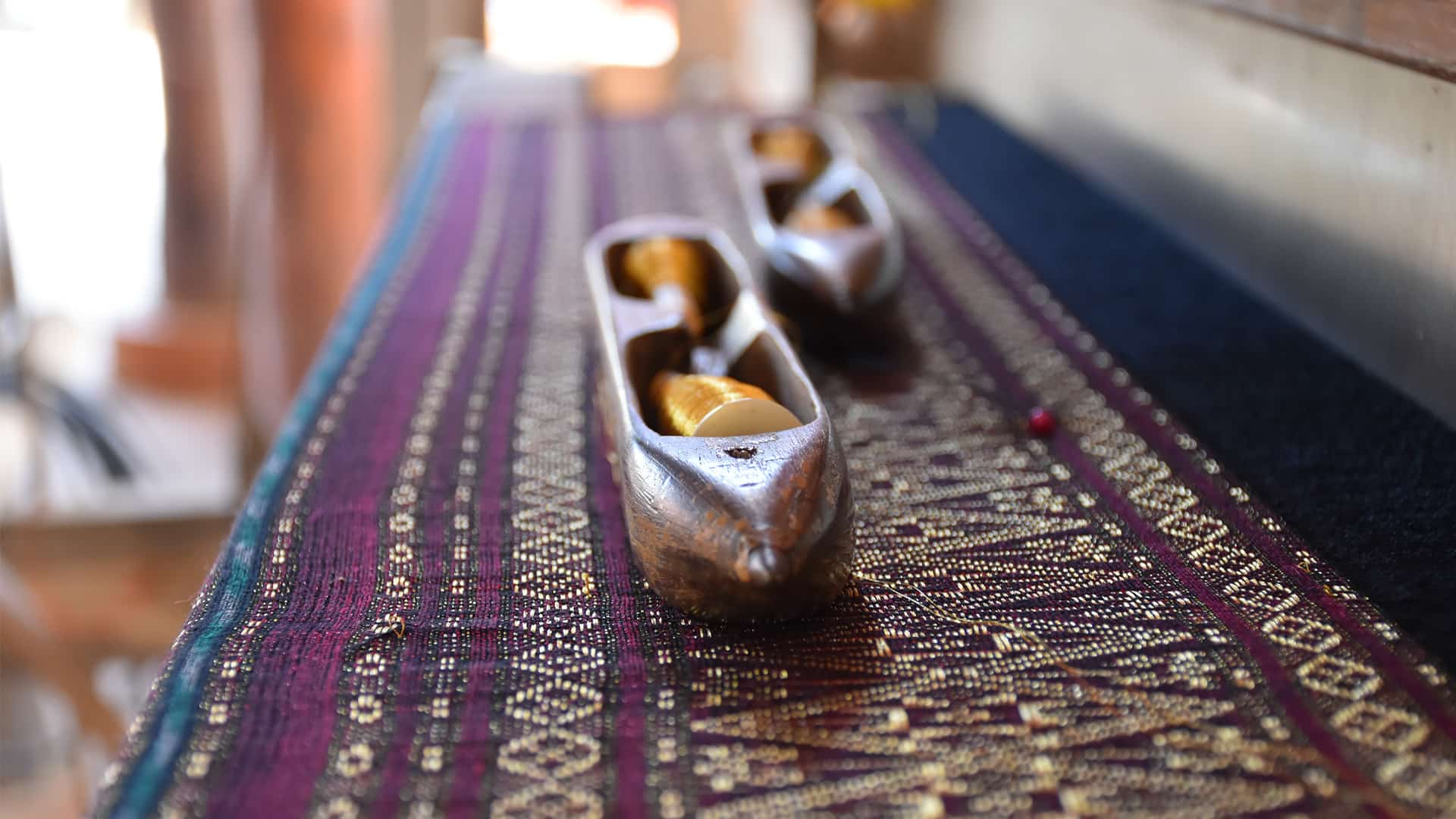
Thai Silk
| EN | TH |
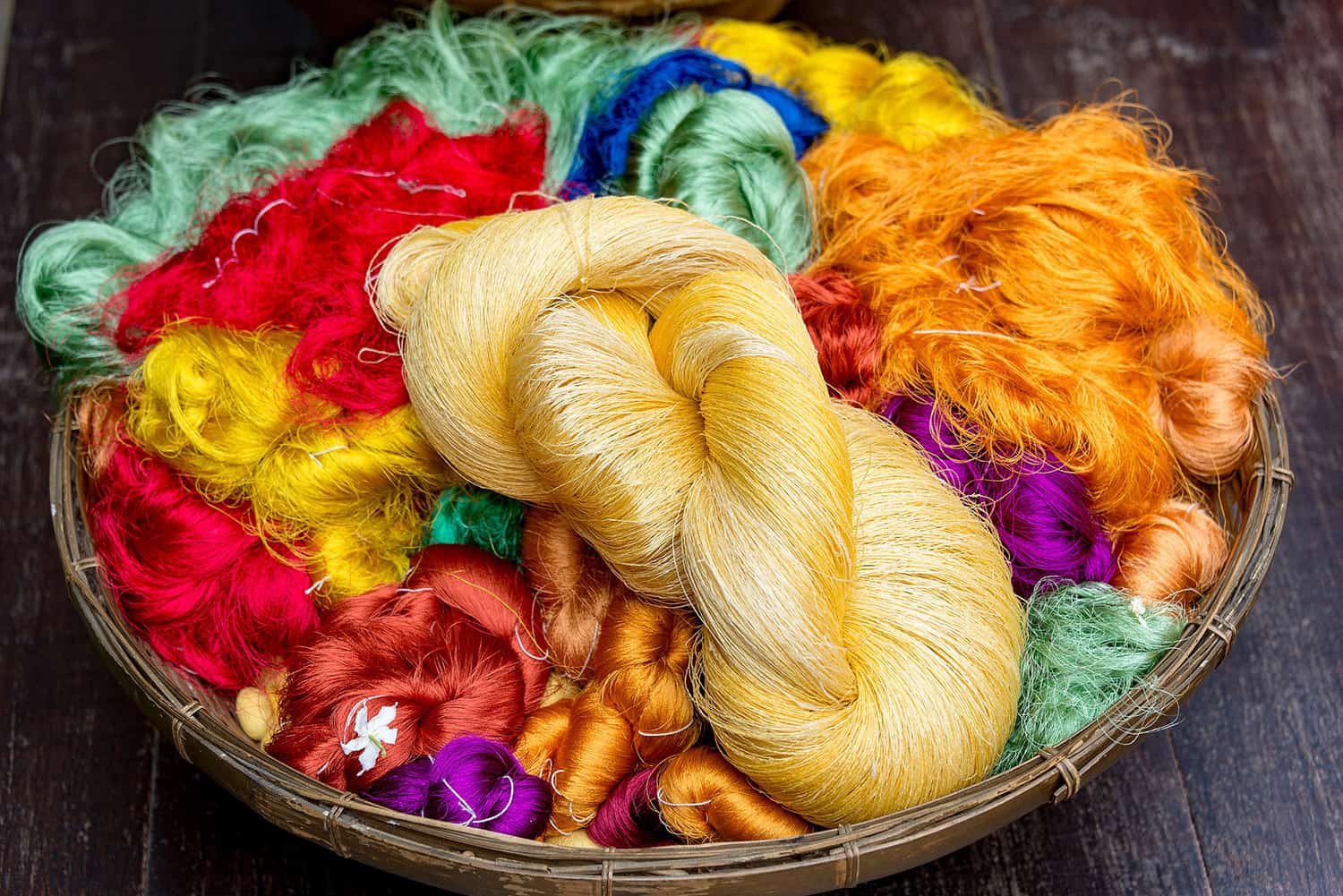
Credit : xiquinhosilva on Wikipedia
The moment you hold a piece of Thai silk between your fingers, the softness and high quality of the fabric leaves you astounded. Silk is a valuable heritage of Thailand and the tradition of silk production is a matter of pride for the Thai people. The unique silk thread patterns on this fabric are what gives it a unique beauty and sets it apart from silks from other parts of the world. Thai silk is a well-known and popular material all around the world.
In the past, Thai silk weaving was done in households for personal use or use in ceremonies like weddings, religious rituals and social events. Thai people blended art with local materials to create something beautiful. Thai silk is a symbol of the beauty and charm of Thai people. It represents their refinement in the past and the art of creating these beautiful designs is still carried on till the present.
History of Thai Silk
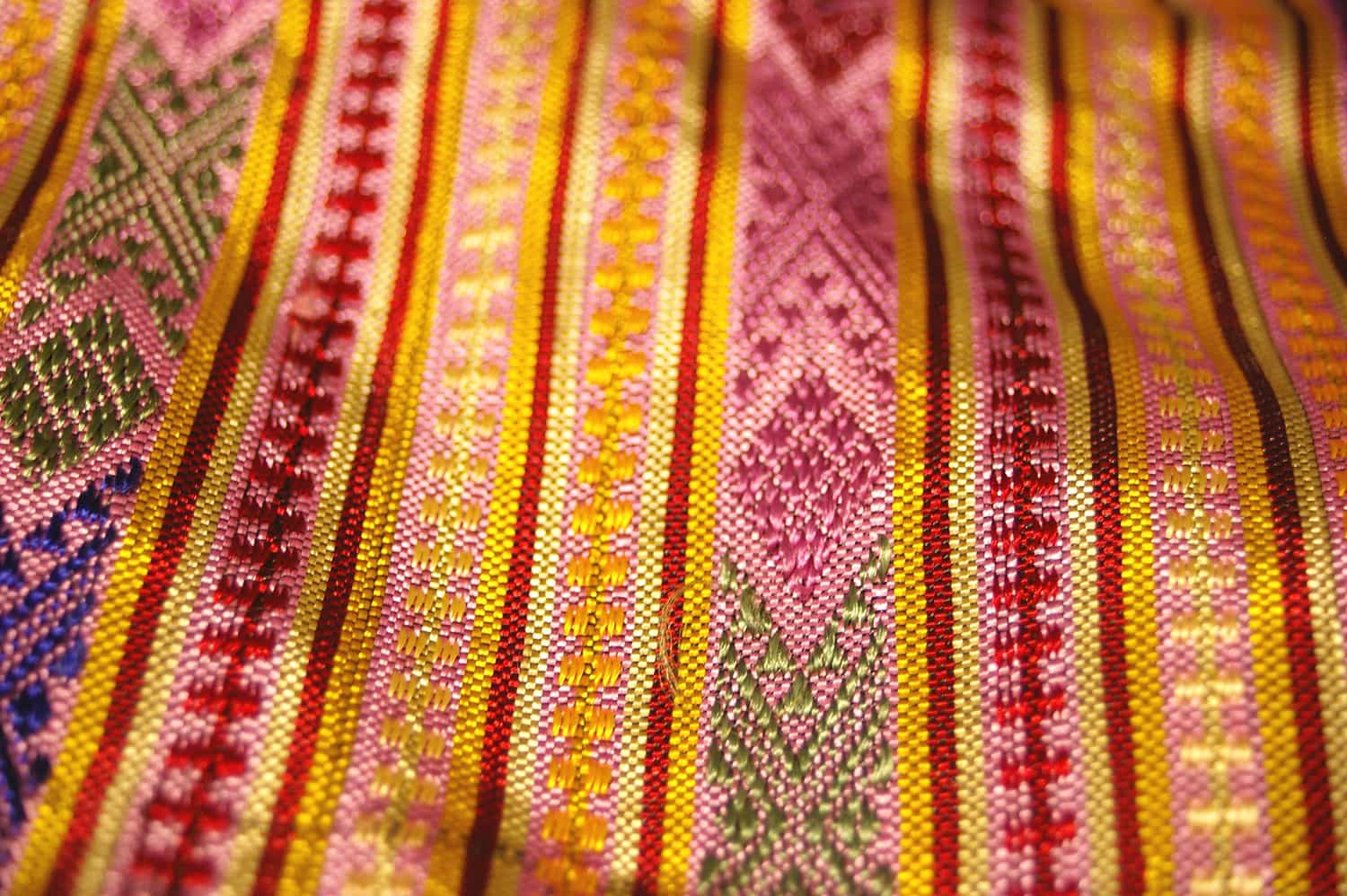
Credit : thaidup on freeimages
The earliest evidence and discovery of silk can be traced back about 4700 years ago in China. An ancient Chinese book called Kai Pi Yan Yi or Epic Tales about the World Creation cites a Chinese royal lady as the first silk weaver. It is said that Empress Si Ling Chi was the first person to discover this beautiful fabric.
However, the earliest evidence related to silk in Thailand can be traced back about 3000 years ago. Silk scraps of Ban Chiang culture were discovered at Ban Nadi, Nong Han District, Udon Province in Thailand and other areas in the Isan (North-east) region.
It is believed that silkworms were raised and then they wove silk for use as garments in this region. The silkworm species they used is a common type that incubates throughout the year. It has a small slender shape and is yellow. There is evidence of silk weaving for garments in other parts of Thailand as well. It is mentioned in inscriptions of various chronicles from the Ayutthaya period to the Krung Thonburi period and is still carried out till the present era.
The practice of silk weaving has improved over the years and this skill has been preserved through various projects. Many improvements and adjustments were made to the original practice to help silk weaving become a more widely practiced art both in Thailand and abroad. It is still a popular practice for families to weave silk for religious ceremonies like merit-making activities or as a way to financially support the family.
Although other countries around the world produce silk as well, Thailand has established one of the most respected reputations in the industry. The craftsmanship of Thai weavers has helped create impressive and distinct Thai silk fabrics that are coveted all over the world.
Patterns and special features of Thai silk
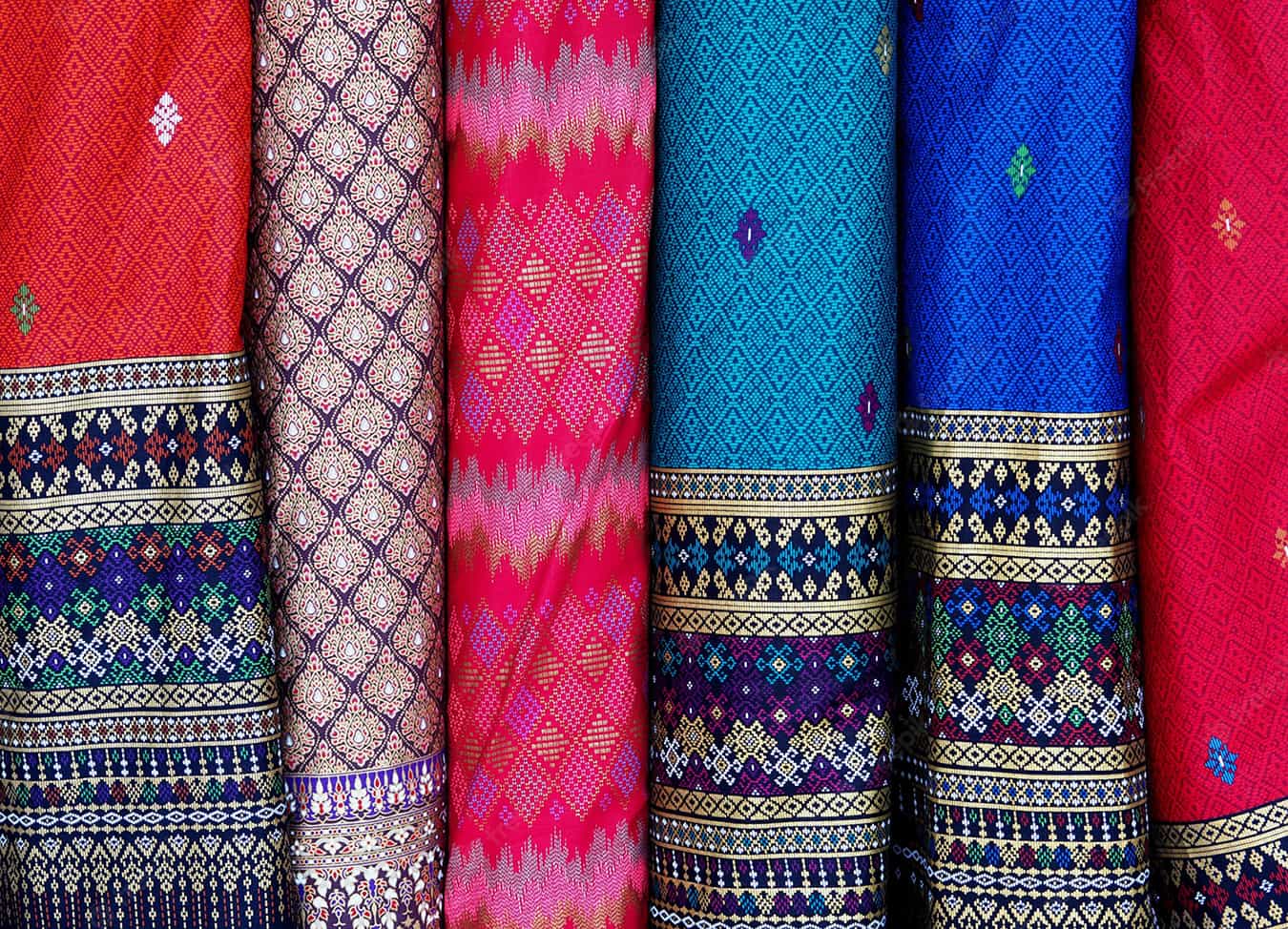
Credit : vikor on freepik
The identity of Thai nationality displays itself in various patterns like Thai flowers, animal shapes, geometric shapes or local symbols which are woven into the fabric. The craftsmanship and skill of the villagers weaving the silk are such that the patterns are delicate and beautiful, retaining the uniqueness of Thai culture.
The silk is so intricately woven that it allows the wearer to feel comfortable and elegant at the same time. The special properties of the fibres used for Thai fabrics is another important factor that sets them apart.
Silk is made from natural fibres that are obtained from silkworms. The fibres from the silkworm are woven into the fabric that is tough and flexible but also extremely soft. Silk can absorb moisture and can be dyed in different colours quite easily. The moisture regaining property also makes it a very comfortable fabric for the wearer.
Although Thai silk has many advantages, it also has certain limitations that must be considered. Silk fibres can deteriorate easily if they are exposed to too much heat while ironing or even from sunlight. Another problem is that insects like eating silk thread because it is a protein fibre. It is important to store the silk in a dry place because if the fabric is exposed to too much moisture, it can cause the dyed colour to fade.
Due to its refinement, there is a high price attached to Thai silk. It is a beautiful and unique fabric but it can be rather difficult to care for it and this is one reason why silk is not very commonly preferred by people. It tends to be popular only amongst a certain clientele.
Kinds of Silk
Silk comes in many different types and is categorized by the region it was woven in and its traditional practices. Depending on where a particular type of silk is produced, there is a wide range of styles and colours you will come across. Each type of silk will have a different pattern. The classification is done according to various weaving patterns from the past till the present.
Here we will mention some examples of the types of silk that are suitable for use in interior designs. This information will help you decide what you should use or buy when considering Thai silk for interiors.
Yok silk
(ผ้ายก)
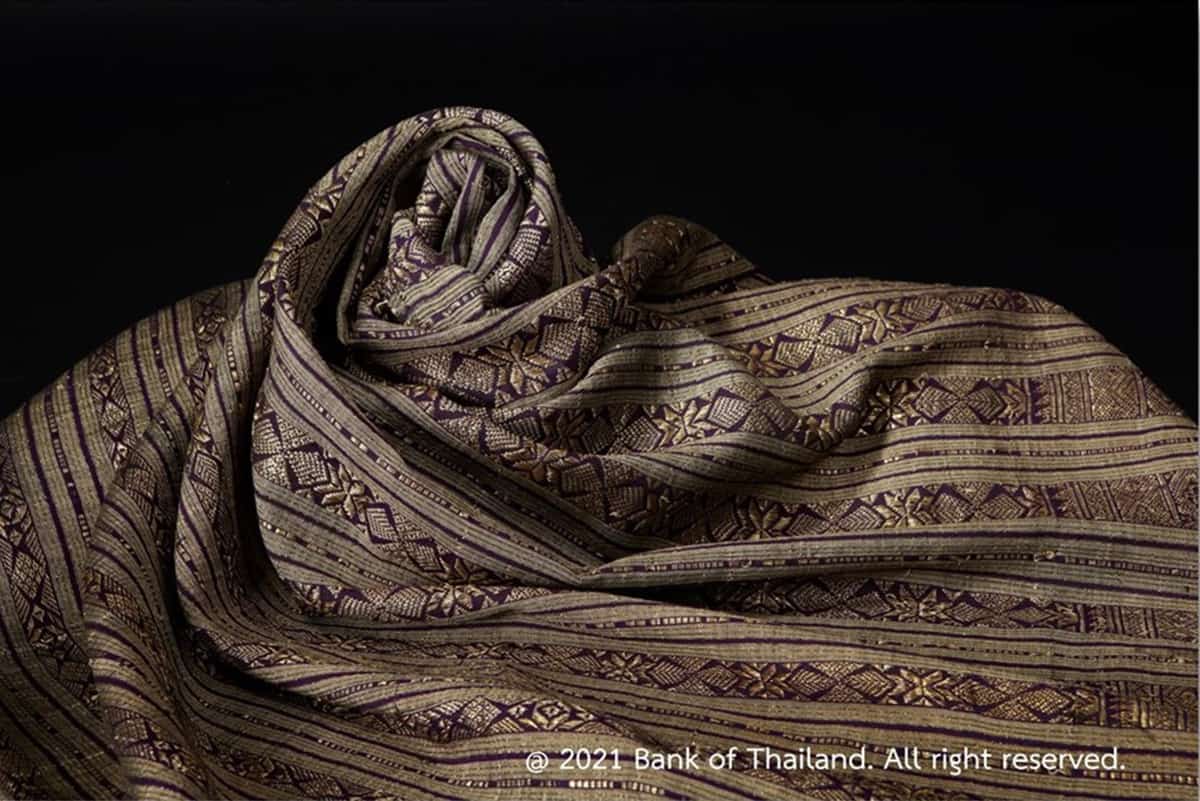
Credit : bot .or.th (Bank of Thailand)
Yok silk is silk that has a built-in pattern using special silver and golden metallic filament wefts. This type of silk is commonly woven in the northern region, Chiang Mai and Lamphun province and in the southern region, Surat Thani province where it is known as Phumriang silk (ไหมพุมเรียง).
Chok Silk
(ผ้าจก)
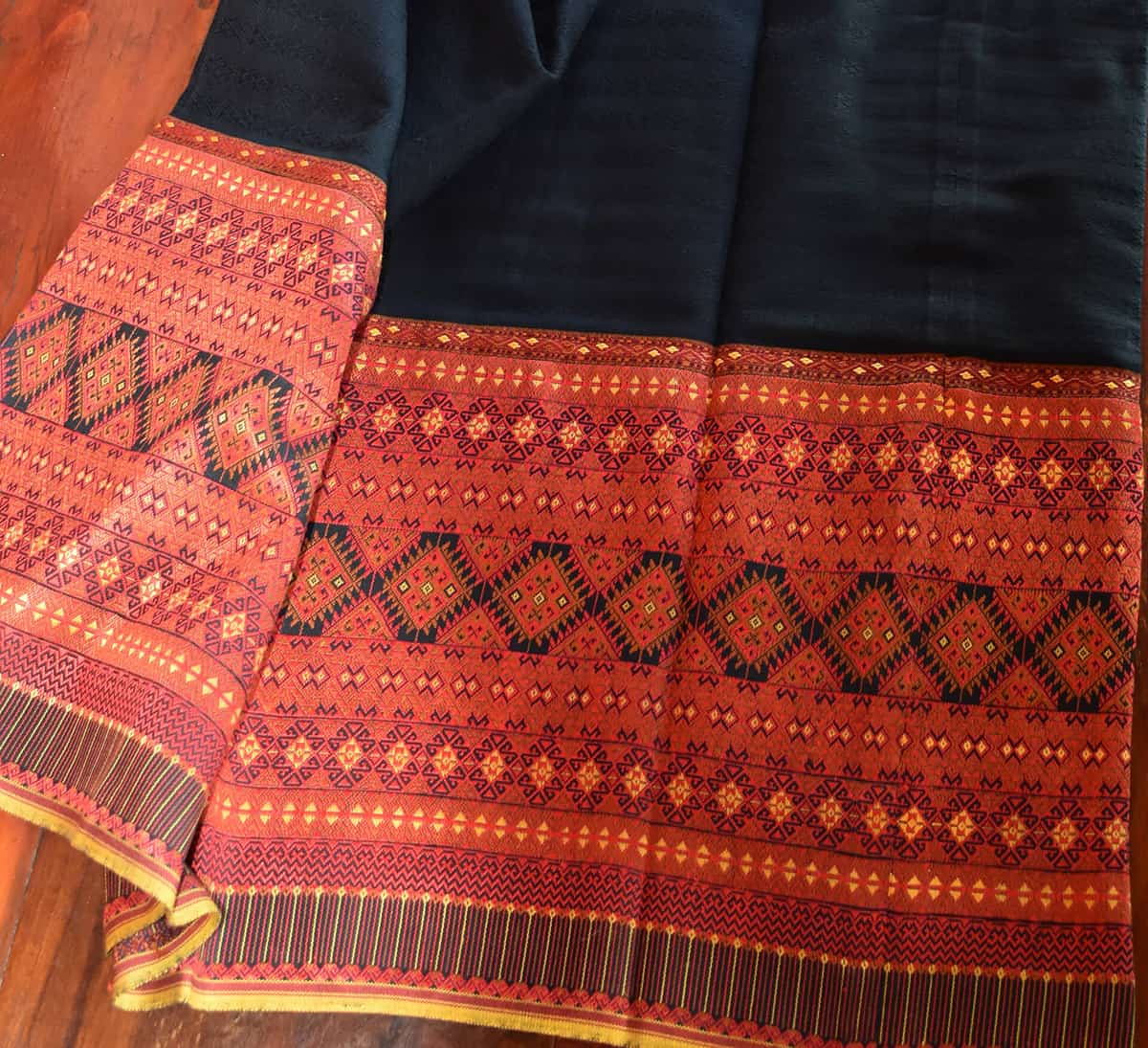
Credit : stwo .info
Chok silk is a type involving the same storage and weaving methods as Khid but it has a pattern. It is possible to switch colours and patterns by adding a special weft to Khid intermittently. Therefore, the Chok silk fabric has more colours and patterns than the silk obtained from Khid pattern weaving. Some famous production sites for Chok silk are Sukhothai province, Chiang Mai province, Ratchaburi province and Uttaradit province. Cloth that has been made with Khid or Chok silk, like Kaab bua silk (ผ้ากาบบัว) is quite famous. This fabric is unique to the Ubon Ratchathani province.
Phrae Wa Silk
(ผ้าแพรวา)
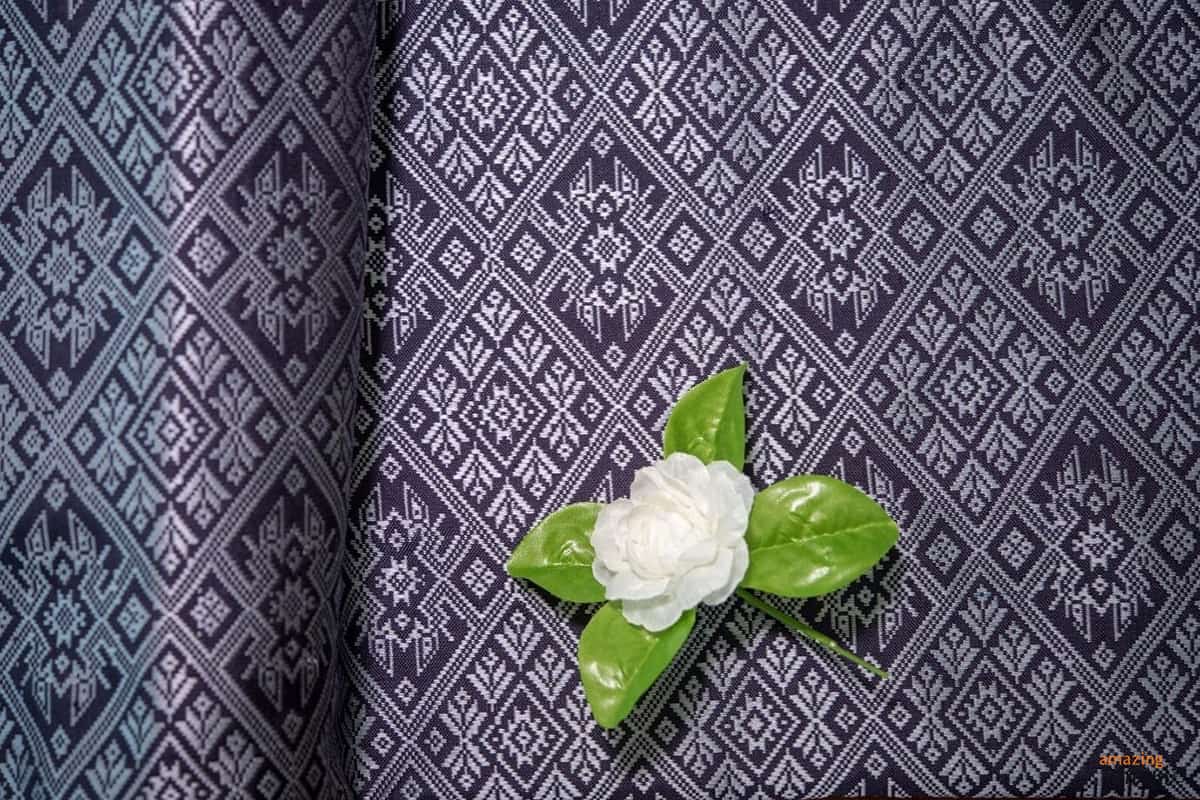
Credit : i-san.tourismthailand .org
Phrae Wa silk is a woven type of silk that has a mix of Khid and Chok silk patterns on the fabric. It gets its name from the term “wa” which is a Thai unit where 1 wa is equal to 2m. This silk cloth will usually be of a “wa” length and hence the name. It is used as a cloth wrapped around the chest during ceremonies. In the culture of Phu Thai people, this type of silk is originally red in color as the base. These days, there are different patterns adopted into the weaving and the width and length of the fabric have also been modified compared to the original form. The colors of this type of silk are also more modernized and not just red in color anymore.
Mud Mee Silk or Ikat Thai Silk
(ผ้ามัดหมี่)
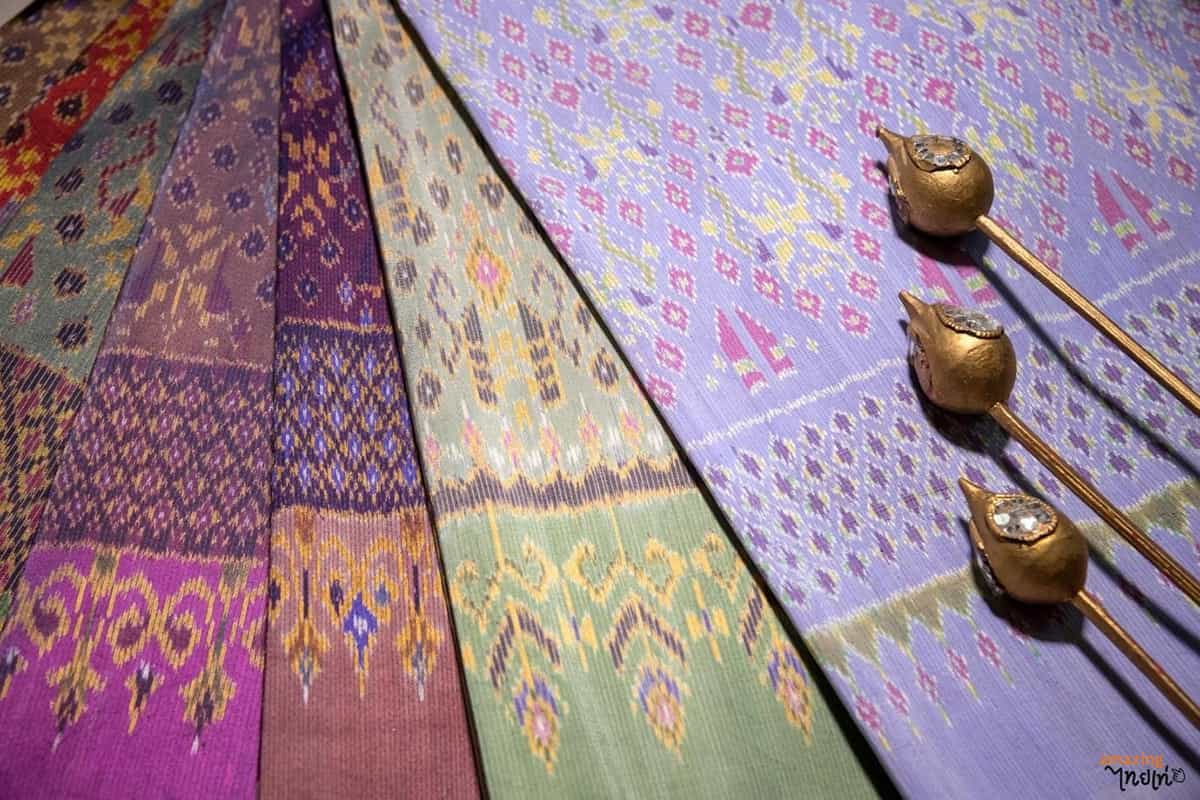
Credit : i-san.tourismthailand .org
Mud Mee silk is originally from the northeast region of Thailand. It is popular in northern as well as central parts of the country. In most of the Mud Mee cloth, only the silk wefts are tied. The famous Mud Mee fabrics include Hangkrarok silk (ผ้าหางกระรอก), Hol silk (ผ้าโฮล) and Poom silk (ผ้าปูม). Mud Mee silk is of two types: 2-heddle and 3-heddle which both have a smooth texture, compact weaving and a shiny front side while the back side is a little less shiny.
Koh Luang Silk or Interlocking Tapestry Weaving
(ผ้าไหมเกาะล้วง)
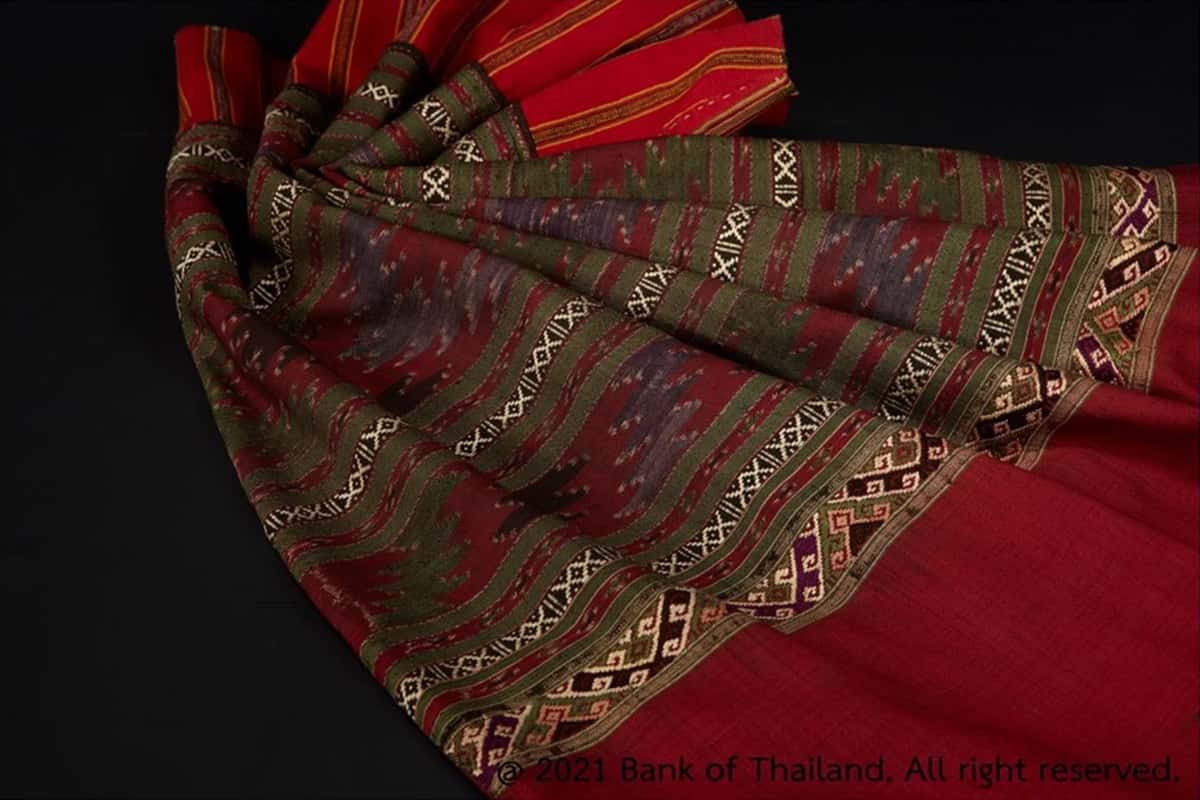
Credit : bot .or.th (Bank of Thailand)
Koh Luang silk is a pattern woven by the Tai Lu people from the northern regions of Thailand like Nan province and Phayao province. The pattern woven into this cloth is called a flowing water pattern which means that it looks like a flowing stream. The pattern itself appears simple but it is difficult to make. It is made with a special technique that has been passed down through the years. It takes a long time to make these patterns with narrow stripes around the centre of the fabric.
Plain Silk
(ผ้าไหมพื้น)
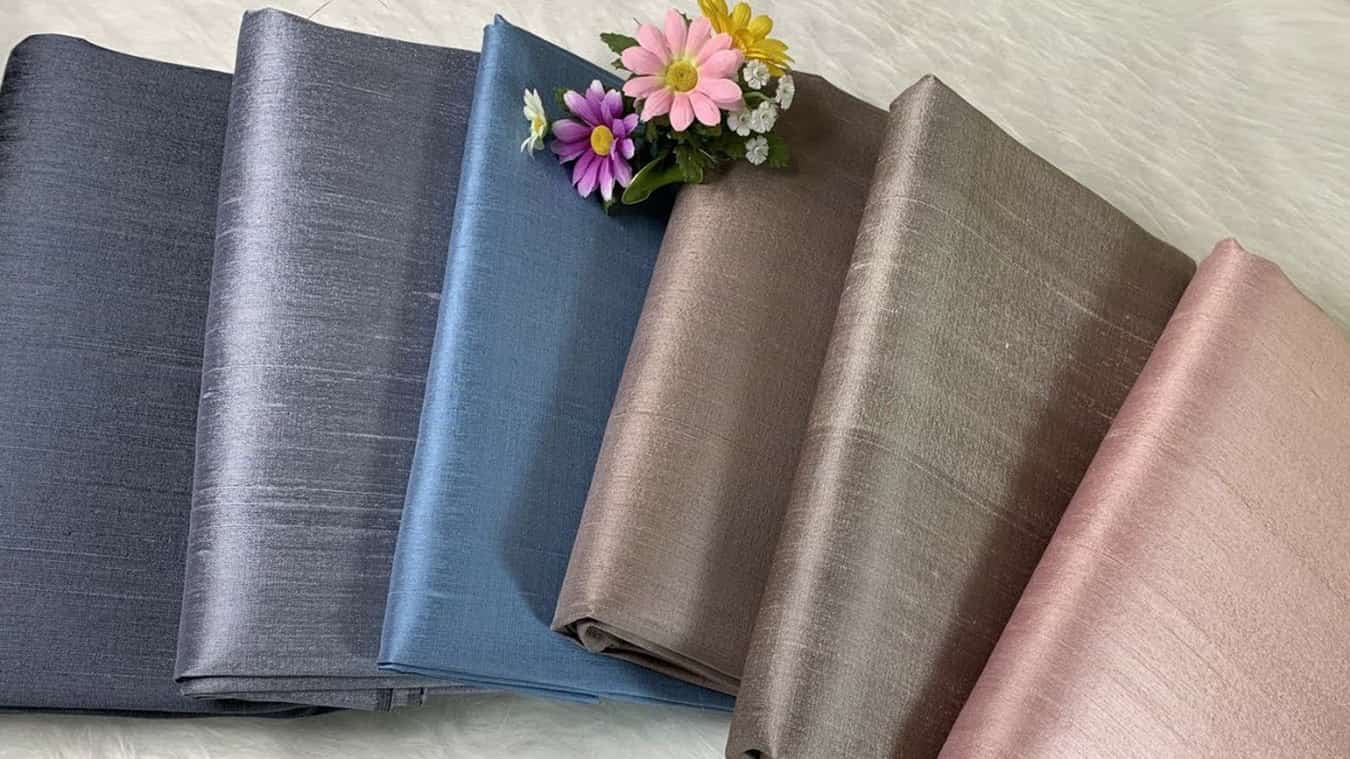
Credit : ปาลิ ผ้าไหมไทย on Youtube
Plain silk is a plainly woven type of silk where ordinary warps and wefts are used all over the fabric. The final product is a fabric that is plain in color, without any pattern and warps and wefts in the same color or in different colors. This fabric is popular and used quite commonly. This type of Thai silk is also exported abroad.
Thai silk has a variety of patterns and stripes and it is easy to adopt this fabric according to clothing suited to the current era. This is why it has continued to be used for creating many products like clothing, decorative items, etc. Thai silk is a beautiful element to add to your interior design.
Weaving art
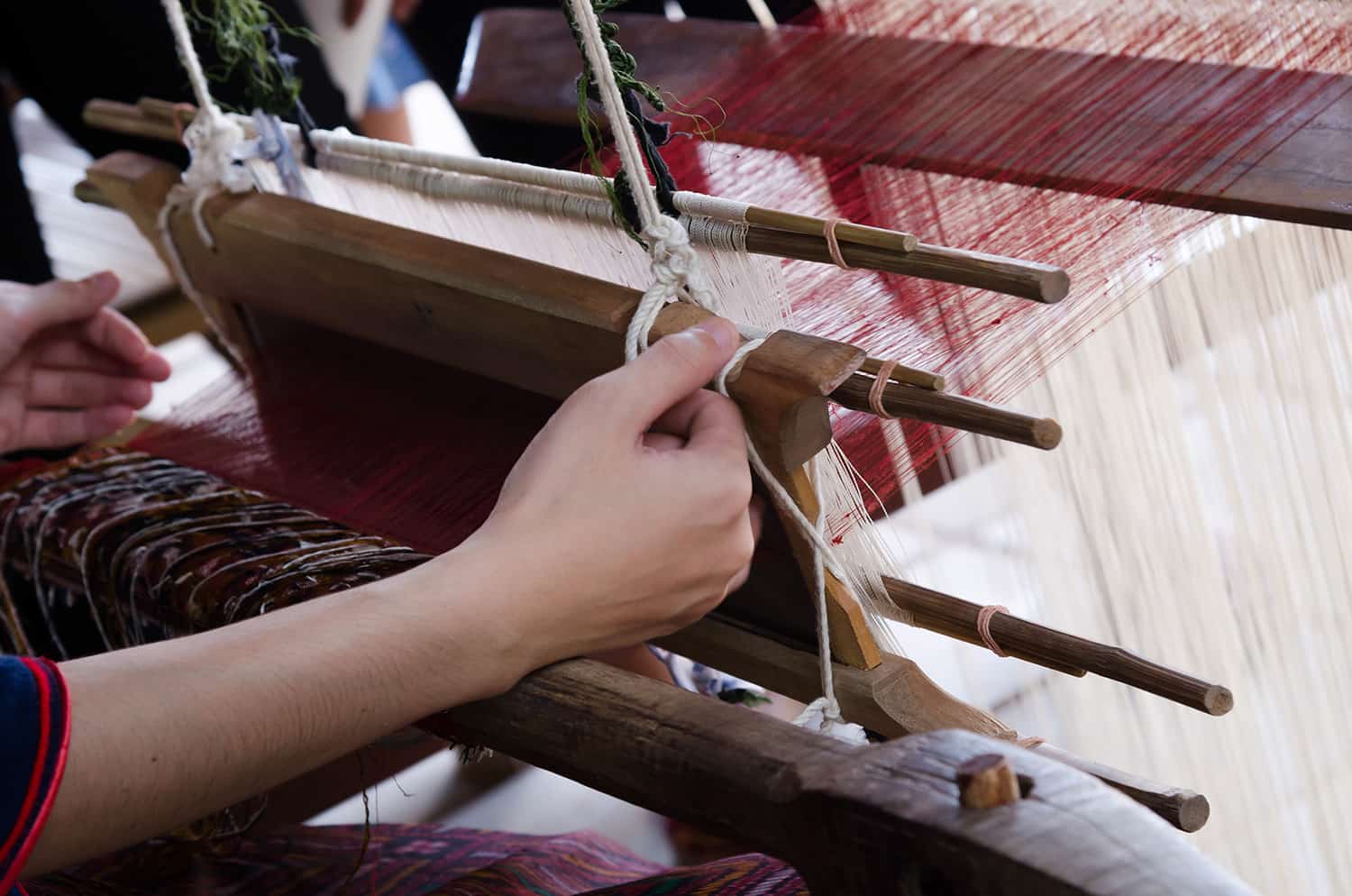
Credit : slimboss on vecteezy
Weaving is an art that the Thai people of this generation need to work on preserving. In the past, Thai women made a lot of household appliances themselves. One of their most important tasks in the house was to prepare clothes, blankets and garments for the family to use or for important rituals like birth, marriage or ordinations. All of these occasions required the use of woven fabric and this is why it is an essential aspect of Thai culture and life.
The main principle of weaving is to use cotton or silk threads and cross them together to form a pattern. One group of threads called the warps and another group called wefts is used where the wefts are inserted across the warp. While interlocking the threads, different patterns are formed.
Using Thai silk for design inspiration
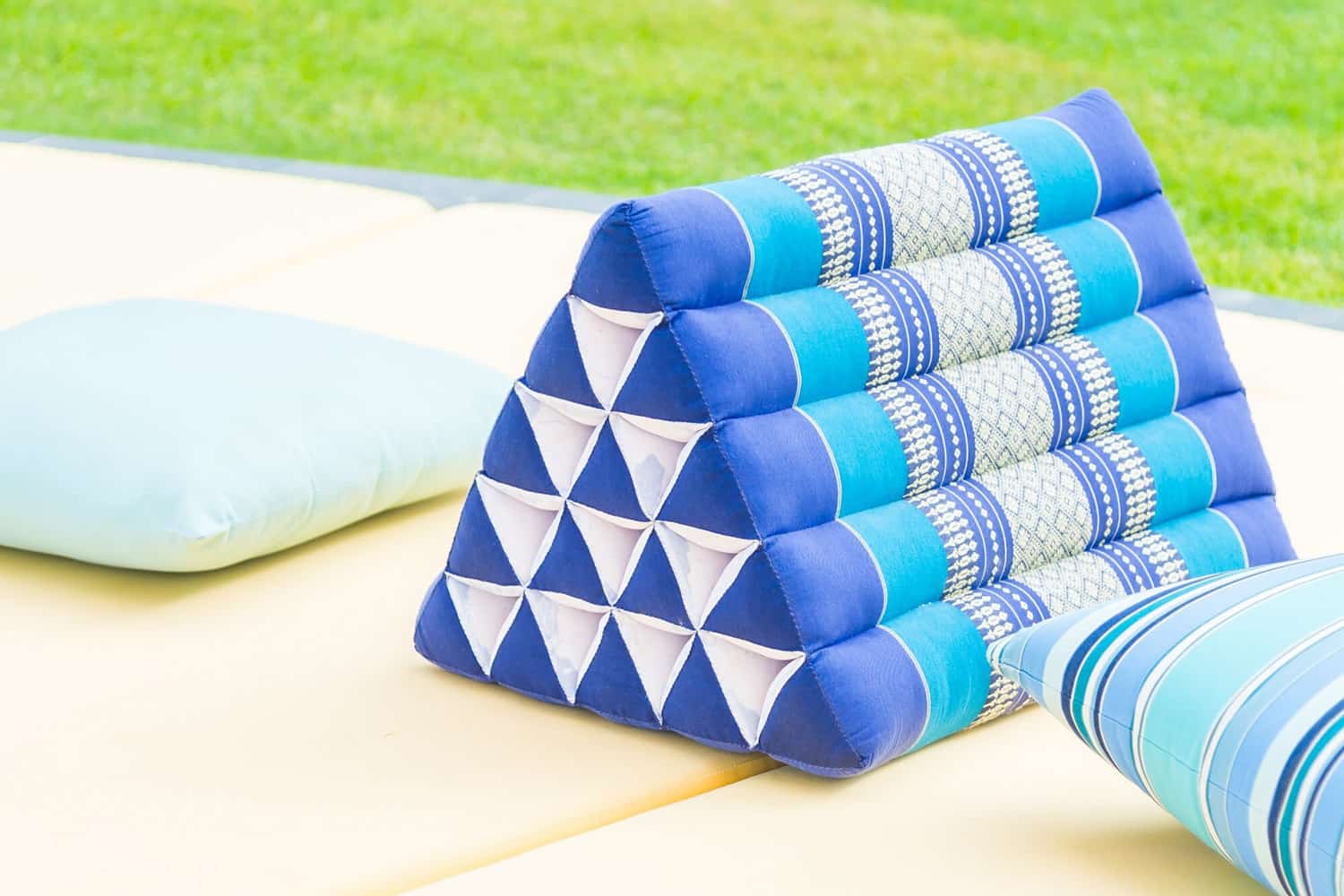
Credit : mrsir on freepik
































